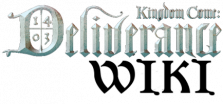[1366 - c.1405]
Konrad Kyeser of Eichstätt was a military engineer, a supporter of King Wenceslas IV and the author of Bellifortis, a manual on the military arts, which is the oldest example of a 'Kriegsbuch' to appear in the Bohemian territories. Written in Latin hexameter, the book consists of 140 parchments with somewhat incomprehensible text. It is accompanied by elaborate drawings by Kyeser himself.
The book must have been very popular at the time of its writing, as testified by the fact that more than thirty manuscripts have survived to this day.
Konrad Kyeser’s loyalty to the Bohemian King is attested by a number of drawings in the Gottingen manuscript, in particular a depiction of the king’s royal tent with a number of the symbols typical for Wenceslas IV, such as a torse (wreath) and the letter W. The main text is prefaced by a prologue and a long dedication to the King of Germany (Rex Romanorum), Rupert III of the Palatinate, which was probably an attempt to ingratiate himself into his services. Unfortunately, we will never know why he did not dedicate his work to Wenceslas IV.
The ten chapters of Bellafortis are devoted to weaponry, siege warfare and the use of various techniques for besieging towers and castles. They also include prescriptions for making medicine and instructions for preparing baths, information about torture devices, and even an illustration and description of a chastity belt. The book concludes with an 'epichedion', a personal elegy written by Kyeser himself with his portrait and personal details (parents and date of birth), as well as a horoscope from May 1402.
Bellifortis is an adroit compilation of military engineering and technology well-known in Kyeser’s epoch. The author based his book on various previous works, including De Mirabilibus Mundi and Liber Ignium by Marcus Graecus. Some parts are also based on personal experience.
[1366 - c.1405]
Konrad Kyeser of Eichstätt was a military engineer, a supporter of King Wenceslas IV and the author of Bellifortis, a manual on the military arts, which is the oldest example of a 'Kriegsbuch' to appear in the Bohemian territories. Written in Latin hexameter, the book consists of 140 parchments with somewhat incomprehensible text. It is accompanied by elaborate drawings by Kyeser himself.
The book must have been very popular at the time of its writing, as testified by the fact that more than thirty manuscripts have survived to this day.
Konrad Kyeser’s loyalty to the Bohemian King is attested by a number of drawings in the Gottingen manuscript, in particular a depiction of the king’s royal tent with a number of the symbols typical for Wenceslas IV, such as a torse (wreath) and the letter W. The main text is prefaced by a prologue and a long dedication to the King of Germany (Rex Romanorum), Rupert III of the Palatinate, which was probably an attempt to ingratiate himself into his services. Unfortunately, we will never know why he did not dedicate his work to Wenceslas IV.
The ten chapters of Bellafortis are devoted to weaponry, siege warfare and the use of various techniques for besieging towers and castles. They also include prescriptions for making medicine and instructions for preparing baths, information about torture devices, and even an illustration and description of a chastity belt. The book concludes with an 'epichedion', a personal elegy written by Kyeser himself with his portrait and personal details (parents and date of birth), as well as a horoscope from May 1402.
Bellifortis is an adroit compilation of military engineering and technology well-known in Kyeser’s epoch. The author based his book on various previous works, including De Mirabilibus Mundi and Liber Ignium by Marcus Graecus. Some parts are also based on personal experience.
